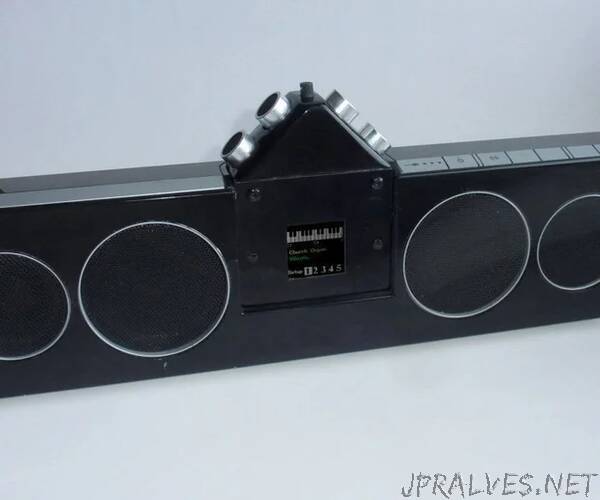
“This is a musical instrument which uses two sonar distance sensors to control the pitch and quality of the notes. It’s not really a Theremin of course but “Theremin” has become the generic term for instruments played by waving your hands around.
It has a built-in MIDI synthesiser, amplifier and speakers. The musical notes are produced by a MIDI chip - the VS1053 - which has 127 voices (i.e. allegedly-different instruments). It has a high degree of polyphony (up to 64) so it can play single notes or chords.
Your right hand controls the note being played. In “discrete” mode the space on the right is divided into “bins”. As your hand enters a bin, the note for that bin starts. When you leave the bin, the note might stop (e.g. an organ) or die away naturally (e.g. a piano).
In “continuous” mode the space on the right determines a continuously variable pitch - like the original Theremin. The note starts when your hand enters the space and stops when you leave the space.
Your left hand controls the quality of the note being played. It can control the volume, tremolo, vibrato, pitch-bend, reverb, etc.
A small LCD screen has a menu which allows you to select the current instrument, the function of the left hand, the scale (or “key”) of the right hand, vibrato, tremolo, etc. You can save and load different “Setups” and switch between them quickly during a performance.
The whole MIDI “Theremin” instrument operates stand-alone with its own speaker and rechargeable battery.
If you’re going to copy my build, you will need an Arduino Nano (£1.50), a VS1053 module (£4.50), a 1.44” ST7735 LCD display(£3.50), two HC-SR04 modules (£1 each) and a few resistors. You’ll also need some powered speakers and perhaps a lithium cell and a PSU but the details will depend on how you decide to build it. I got all those extras from car-boot sales and charity shops. Plus you’ll need the usual electronic workshop paraphernalia.”
